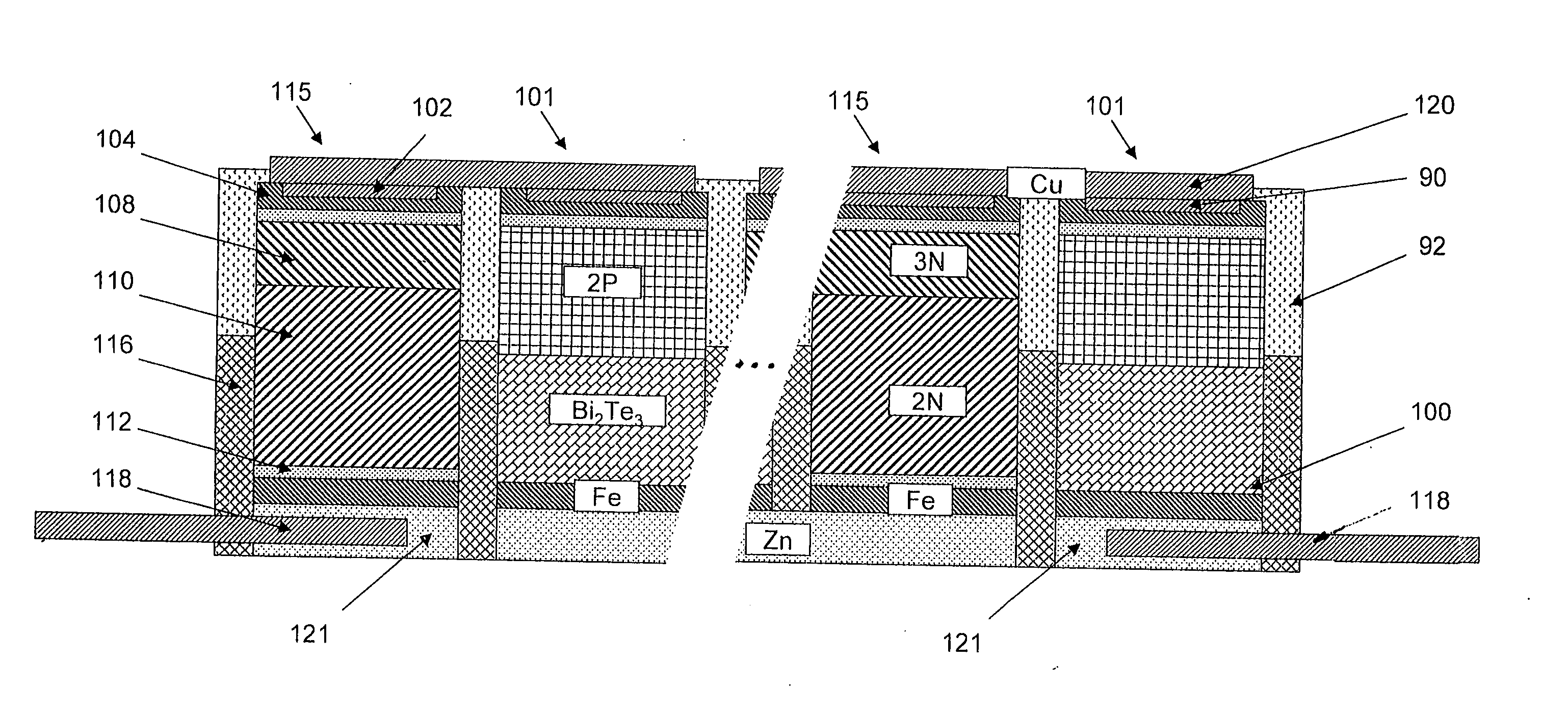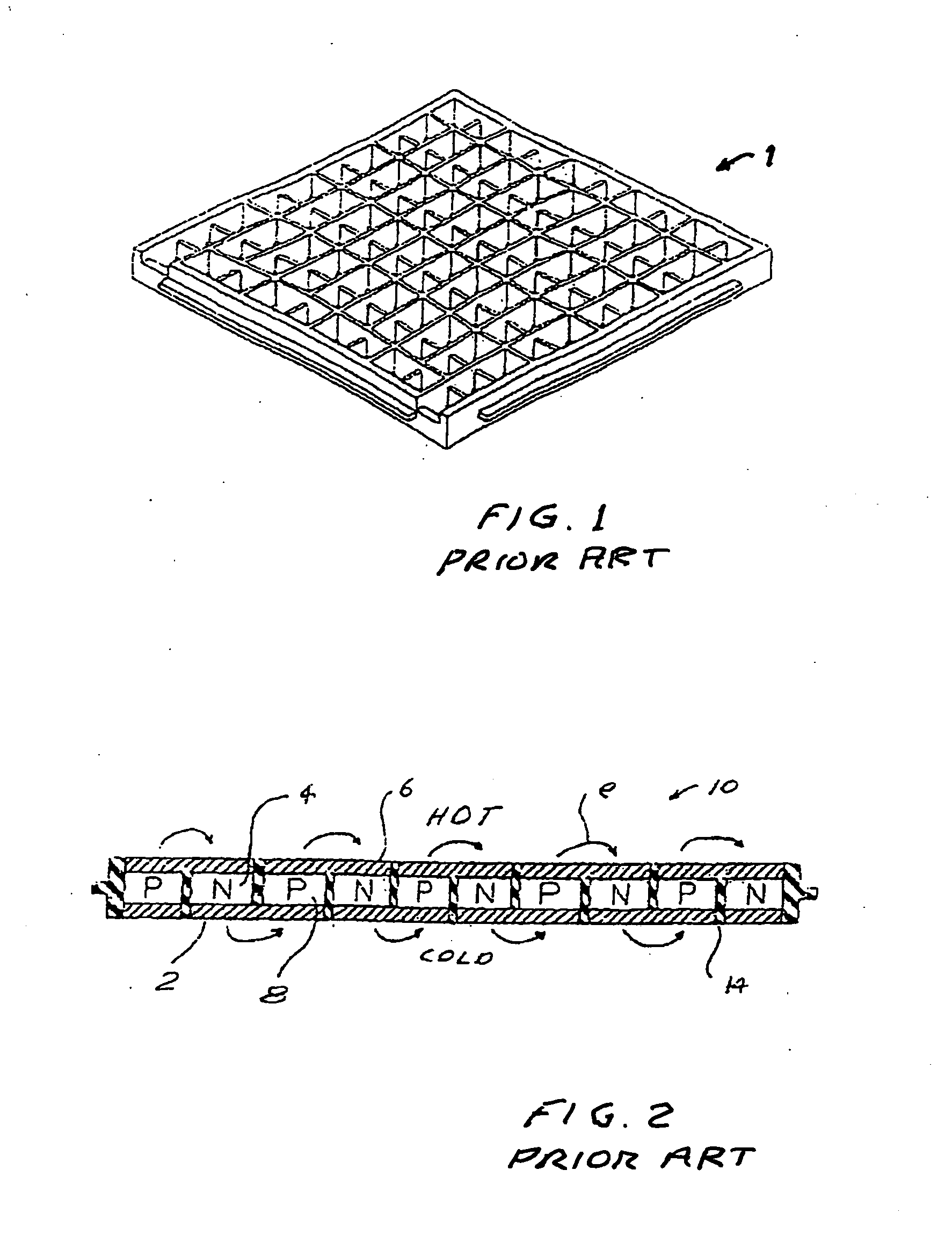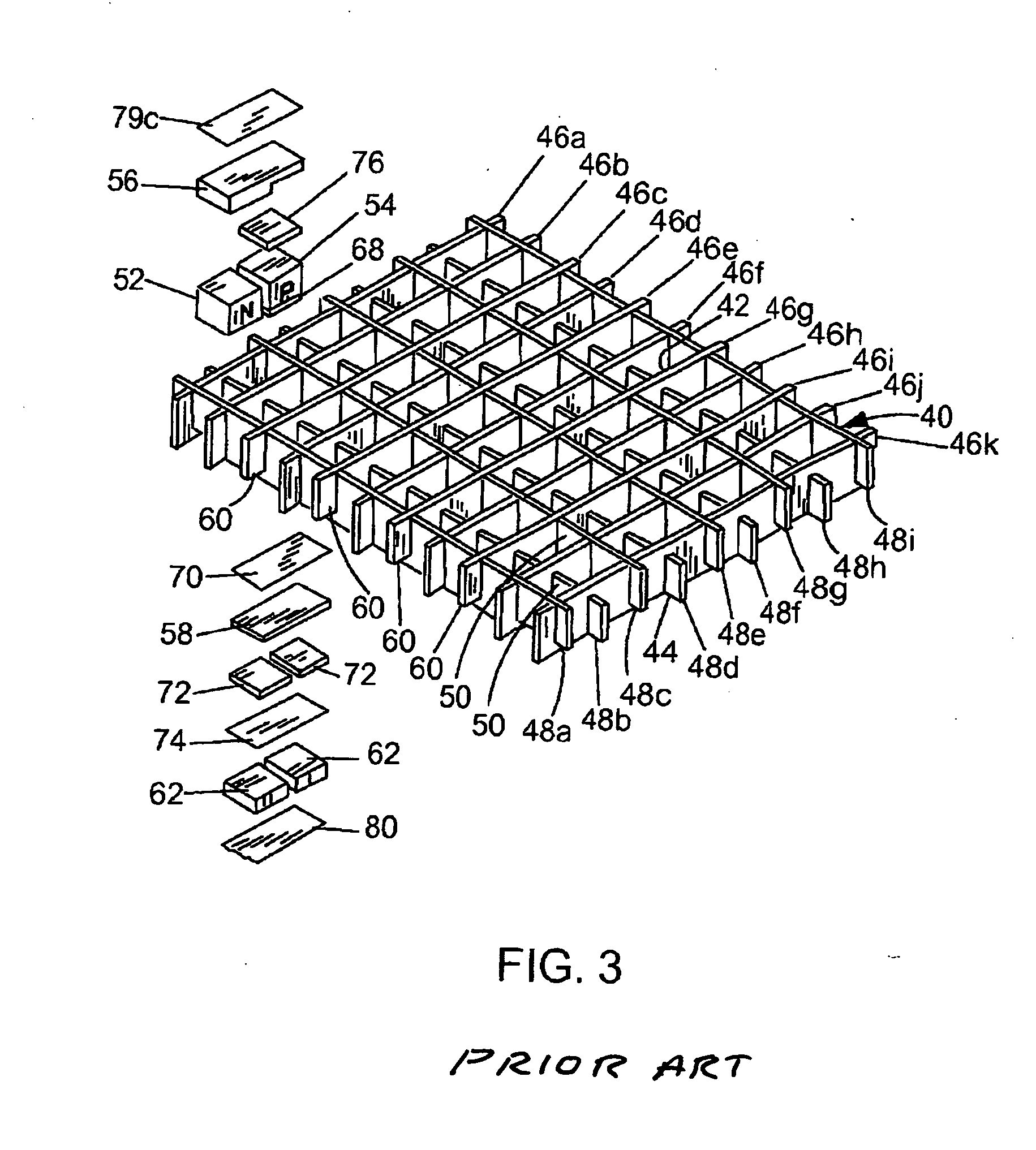Segmented thermoelectric module with bonded legs
a thermoelectric module and leg technology, applied in the field of thermoelectric modules, can solve the problems of mica, marginal strength, easy cracking, and low thermal conductivity of thermoelectric systems, and achieve the effect of efficient application and low thermal conductivity
- Summary
- Abstract
- Description
- Claims
- Application Information
AI Technical Summary
Benefits of technology
Problems solved by technology
Method used
Image
Examples
first preferred embodiment
[0043]A first preferred embodiment can be described by reference to FIGS. 7 through 10C. FIG. 7 shows a P leg of this first preferred embodiment. At the top is a copper layer 90 on the hot end to aid in bonding to a copper conductor. Below copper layer 90 is an iron layer 92 to and a mixed layer 94 of 25 percent Fe and 75 percent P-type PbTe to chemically insulate the PbTe layer 96 from the copper layer 90. Below the PbTe layer 96 is a Bi2Te3 layer 98 and at the bottom is a thin layer of Fe 100 to enhance bonds with a later to be provided sprayed zinc connections. The thermoelectric material for layers 96 and 98 are chosen to provide high thermoelectric efficiencies at both the higher and lower temperature regions of the P leg. FIG. 8 shows a similar design for the N legs. At the top is a copper layer 102 and Fe and mixed layers 104 and 106 as for the P leg. The 3N layer 108 is a layer of PbTe designed for high efficiencies at temperatures close to 500° C. and the 2N 110 is a layer ...
PUM
| Property | Measurement | Unit |
|---|---|---|
| temperatures | aaaaa | aaaaa |
| temperature | aaaaa | aaaaa |
| temperature | aaaaa | aaaaa |
Abstract
Description
Claims
Application Information
 Login to View More
Login to View More - R&D
- Intellectual Property
- Life Sciences
- Materials
- Tech Scout
- Unparalleled Data Quality
- Higher Quality Content
- 60% Fewer Hallucinations
Browse by: Latest US Patents, China's latest patents, Technical Efficacy Thesaurus, Application Domain, Technology Topic, Popular Technical Reports.
© 2025 PatSnap. All rights reserved.Legal|Privacy policy|Modern Slavery Act Transparency Statement|Sitemap|About US| Contact US: help@patsnap.com



